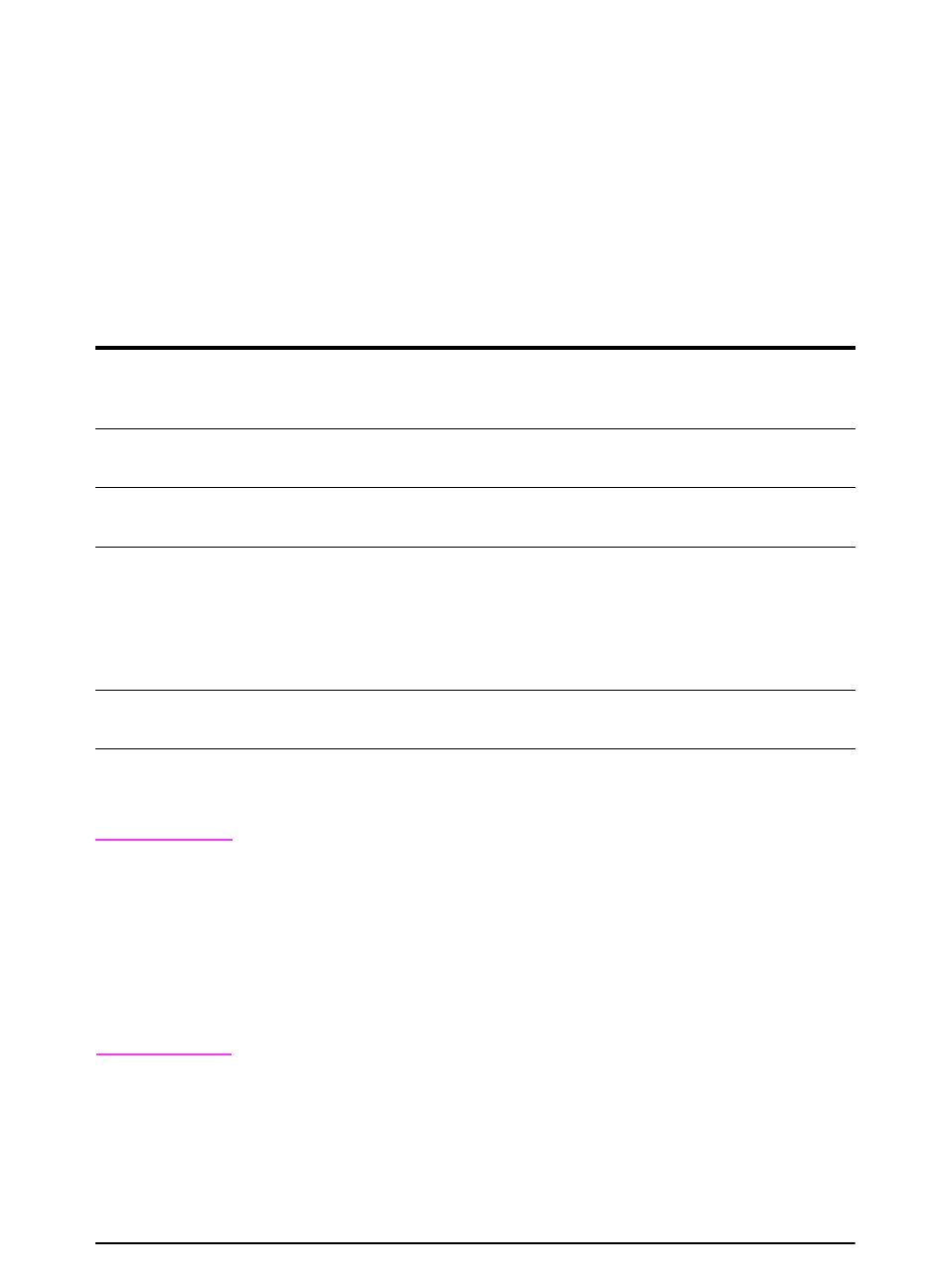
EN
Specifications A-7
Guidelines for Using Paper
For best results, use conventional 20 lb (75 g/m
2
) paper. Make sure
the paper is of good quality, and free of cuts, nicks, tears, spots,
loose particles, dust, wrinkles, voids, and curled or bent edges.
If you are unsure what type of paper you are loading (such as bond
or recycled), check the label on the package of paper.
Some paper causes print quality problems, jamming, or damage to
the printer.
Note
Do not use letterhead paper that is printed with low-temperature
inks, such as those used in some types of thermography.
Do not use raised letterhead.
The printer uses heat and pressure to fuse toner to the paper. Make
sure that any colored paper or preprinted forms use inks that are
compatible with the printer’s temperature (392° F or 200° C for
0.1 second).
Symptom Problem with Paper Solution
Poor print quality or toner
adhesion.
Problems with feeding.
Too moist, too rough, too
smooth, or embossed; faulty
paper lot.
Try another kind of paper,
between 100-250 Sheffield,
4-6% moisture content.
Dropouts, jamming, curl. Stored improperly.
Store paper flat in its
moisture-proof wrapping.
Increased gray background
shading.
Too heavy.
Use lighter paper.
Open the rear output bin.
Excessive curl.
Problems with feeding.
Too moist, wrong grain
direction or short-grain
construction.
Open the rear output bin.
Use long-grain paper.
Set
PAPER REFORMING=ON
(page B-14).
Set
FUSER MODE=LOW
(page B-4).
Jamming, damage to printer. Cutouts or perforations.
Do not use paper with cutouts
or perforations.
Problems with feeding. Ragged edges. Use good quality paper.


















